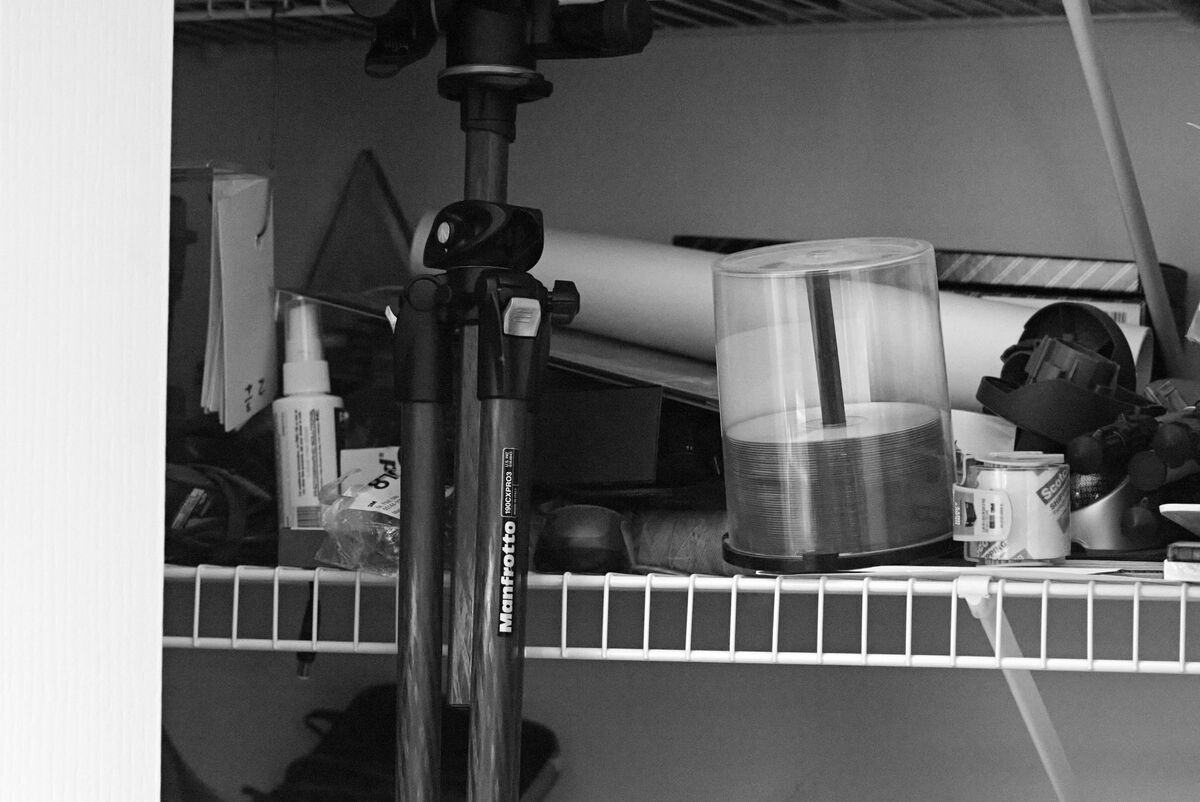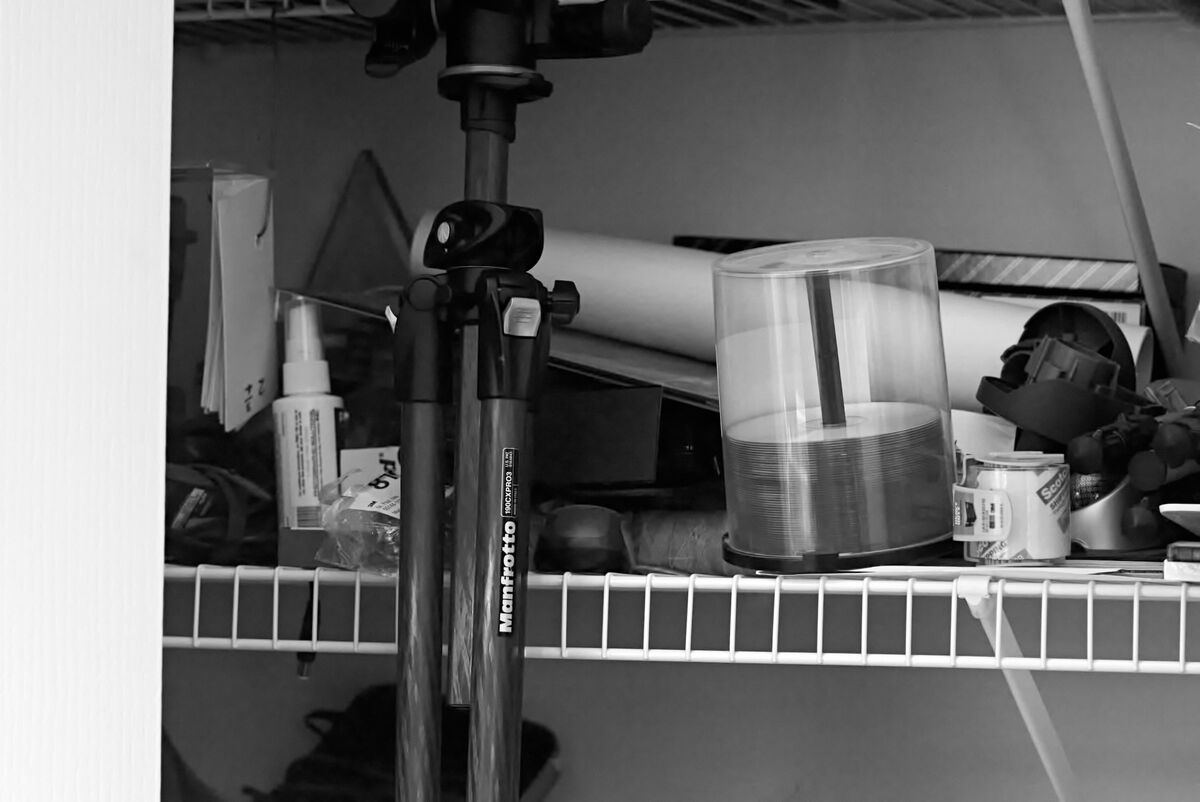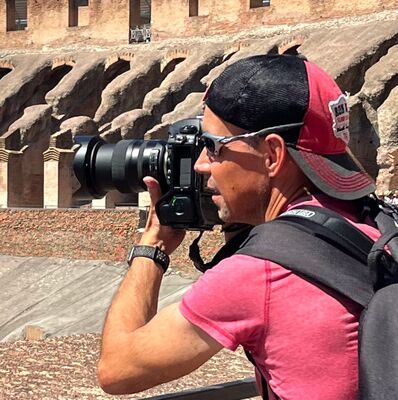The "Fear of Noise"
Dec 27, 2022 12:33:23 #
It is unfortunate, but also unavoidable, that an electrical engineering term, "noise". made its way into the photograph realm. For those of us who have used, and continue, to use film, grain is a part of the process. With film. the higher the ISO rating the more grain is evident. Similarly, the higher the ISO setting on a digital camera the more noise becomes evident.
Though not exactly the same, noise could be considered the digital equivalent of grain. However, unlike film, there are ways of mitigating the effects of high ISO with digital exposures. One just needs to acquire those skills and the desire to use them.
--Bob
Though not exactly the same, noise could be considered the digital equivalent of grain. However, unlike film, there are ways of mitigating the effects of high ISO with digital exposures. One just needs to acquire those skills and the desire to use them.
--Bob
... meanwhile somewhere in Norway wrote:
Back in the Old (film) days I made choices with fi... (show quote)
Dec 27, 2022 13:30:36 #
TriX wrote:
Flash is one of the few circumstances where I don’t use auto ISO - combining ETTL with auto ISO can produce unpredictable and undesirable results - I go full manual with flash.


Dec 27, 2022 13:49:15 #
R.G. wrote:
If you go back more than ten years your isophobia would have been justified. Cameras have improved and post processing has improved. Auto ISO will re-condition you to think of ISO as the best exposure variable to have floating. M+AutoISO+EC gives you everything that you need for a simple and effective workflow.
I agree! As most cameras are ISO Invariate, that parameter is of little consequence in the exposure problem. As stated, pp takes our images the rest of the way through the noise issues.
Check out Underwater Photography Forum section of our forum.
Dec 27, 2022 14:07:30 #
rmalarz wrote:
It is unfortunate, but also unavoidable, that an electrical engineering term, "noise". made its way into the photograph realm. For those of us who have used, and continue, to use film, grain is a part of the process. With film. the higher the ISO rating the more grain is evident. Similarly, the higher the ISO setting on a digital camera the more noise becomes evident.
Though not exactly the same, noise could be considered the digital equivalent of grain. ...
...
--Bob
Though not exactly the same, noise could be considered the digital equivalent of grain. ...
...
--Bob
They are synonymous.
Grain referring to the "grains" of chemicals in the emulsion on film,
and noise referring to the aberration of signal quality in a sensor.
Same end effect.
Dec 27, 2022 16:21:37 #
rmalarz wrote:
It is unfortunate, but also unavoidable, that an e... (show quote)
Yup! Sometimes I miss GRAIN! Grain is to cerian kidsof photography as brush strokes art to paintings- they exist as part of the art.
My experience back to an era when the concept of existing low ligh- the old black cat in a coalmine at midnight" school of thought was quite acceptable. The later versions of the faster film were virtually grainless if processed carefully. Even minor temperature shifts between baths or too high a pH in the stop or fixer could cause minor reticulation that would exaggerate grain. I would process my black and white film as if they were transparent material and maintain a very tight conto over temperatures. I shot Tri-X at 12 hindering Accufin or Eathol UFG and mage virtually grainless 16x20 prints.
Do you wanna remember GRAIN? How about ISO 3200 Recodgding Film or Royal-X Pan in DK50? Sure you could shoot in dark and dank lighting, have gran the size of golf balls, and not to much shadow detail but the result were COOL. Prnt on a condenser enlarger- SUPER COOL! The grain added a feeling of grit and mood, and it became the trademark of real photojournalism. If the images were well composed, powerful, and revealing, who worried about the grain? In my copy of the 1958 Popular Photograhy Annual, there's enough grain to fill a silo! The image, however, is iconic!
Pushed Super Anscochrom (A.S.500 to 850) added grain and a bit of mysterious glamour to feminine portraiture and life studies.
When color negative films began to incorporate T-Gran technology, I ran out a purchase a bunch of grainy texture screens when wanted to bring back the effect.
"Noise" is wimpy compared to real GRAIN- on the latest came it is negligible. The way so many fols are preoccupied with grain and ultra-sharpness, one would think everyone is producing photo murals and billboards, and exhibit their images on the JUMBOTRON at the local sports venue! So many imges at so share and totally "noisless" thathe look like "cutouts" rather than art or photographs.
I love my electronics, radio technology, audio reproduction, and all that good stuff but all the technological, computer science, and eieingeneering terminology that is that has carried over to photograhy in photography- it's like a bunch of artist painters discussing the manufacturing process pigments and canvas on a molecular level. People are obsessing over things they can not begin to change or control unless they decide to build their own digital cameras.
I once had an opportunity to attend a lecture given by Henry Kloss, oneof the world's most accomplished audio engineers. When questioned about the selection of stereo gear and speakers he professed not to analyze your equipment with oscilloscopes and look for deficiencies- leave that to us engineers- Just go to a concert, a jazz club, an opera, a musical performance of your choice and remember what it sounded like. When you listen to a system that can reproduce that sound- that's the one for you! Mostof the equipmmet he designed was simple, straightforward, and did the job!
Dec 27, 2022 16:28:30 #
Dec 27, 2022 17:00:48 #
TriX wrote:
I leave the auto ISO max limit set at ISO 6400 for my crop Fuji and 12,800 for my FF Canon, and I’m not at all afraid to let it go that high - a quick pass with Topaz denoise AI generally makes the nose invisible. The net-net is that with modern sensors and advanced post processing noise reduction, it’s just not that big a consideration for me, I’d rather concentrate on SS and aperture for a sharp image and the DOF I need. ...
It's so easy to deal with noise that it's a wonder so many people spend so much time talking about it.
I took a shot at ISO 25600 with my A7 II (monochrome) with a 135mm Leica Elmar, 1/160s at f/5.6. The scene is one I have used to test this phenomenon. I then processed the result in Capture One to see the results.
For starters, the thumbnails on my 27" 2k monitor are almost 8x12 inches and the difference in noise is hardly visible. If I don't print this image larger than 8x12 it would hardly be worth the effort to reduce the noise. I need to print the image at about 16x24 to see any benefit from noise reduction.
The mistake that most people make is to look for noise at 100%. For this 24MP image that would mean looking at an image as though it were printed at 48x72 inches. But you could not look at the entire image without backing away almost 6 feet from the print. From that distance, either image would be perfectly acceptable. But the noisier version ight actually look a little sharper.
Default C1 noise settings - Luminance=50, Detail=50

(Download)
C1 noise reduced - Luminance=93, Detail=71

(Download)
Check out The Dynamics of Photographic Lighting section of our forum.
Dec 27, 2022 17:04:44 #
selmslie wrote:
It's so easy to deal with noise that it's a wonder... (show quote)
Even easier to look past it.
Dec 27, 2022 17:54:28 #
larryepage
Loc: North Texas area
selmslie wrote:
It's so easy to deal with noise that it's a wonder... (show quote)
Loss of dynamic range and (on some cameras) color rendition are much bigger problems than nouse, in my experience. While excess noise can usually be removed (or at least reduced) pretty easily, the dynamic range is, unfortunately, gone forever.
Dec 27, 2022 18:25:54 #
larryepage wrote:
Loss of dynamic range and (on some cameras) color rendition are much bigger problems than nouse, in my experience. While excess noise can usually be removed (or at least reduced) pretty easily, the dynamic range is, unfortunately, gone forever.
We are aware that dynamic range has a direct influence on noise. But as with noise suppression, the need for a wide dynamic range is often overstated.
You don't need more dynamic range than is present in the scene. In fact, you seldom need even that much. You only need enough dynamic range to capture the tones that you want to keep for building the image.
The scene I showed above has a pretty wide DR. But I only needed to render some of that DR. There are dark portions that I was satisfied to render as black because they are, after all, actually black.
Dec 27, 2022 21:13:05 #
Delderby wrote:
I find that Auto ISO is useful provided that a limit is set on how high it can go. That limit for me( using my Panasonic M4/3 G80 16mpx) is an ISO of 1600. This has proved to be sufficient latitude for most of my photography. If something higher could be needed then I prefer to make a decision at the time, with WB etc to consider. 
Happy New Year everybody.

Happy New Year everybody.
Just for kicks, Del, I think you will appreciate this. Download and inspect, especially the metadata. The 7-year-old GH4 made this. I would enlarge this to any reasonable size without worry. A full frame camera would be good out to ISO 12800 or higher, but I didn't need one for this.
Check out Software and Computer Support for Photographers section of our forum.
Dec 27, 2022 21:33:55 #
larryepage wrote:
Loss of dynamic range and (on some cameras) color rendition are much bigger problems than nouse, in my experience. While excess noise can usually be removed (or at least reduced) pretty easily, the dynamic range is, unfortunately, gone forever.
Exactly!
Dec 27, 2022 21:58:36 #
larryepage
Loc: North Texas area
selmslie wrote:
We are aware that dynamic range has a direct influ... (show quote)
You are correct, which is exactly why it is easily possible to get quite satisfactory results from JPEGs when using reasonable ISOs and achieving proper exposure. But when dynamic range drops to four or five stops, which is easily achievable, that is no longer the case.
Dec 28, 2022 01:40:13 #
Informative and Nice to hear words of wisdom from film shooters, and especially the perspective from professional film developer's...
Dec 28, 2022 05:20:56 #
It appears to me that the amount of isophobia one has tends to depend on the type of photography one does. Talk to landscape photographer and they will often shoot at manually dialed in base ISO "at all cost". This often works for them, I guess, 'cause landscapes typically don't move around a lot so you can get away with slower shutter speeds and stack photos (HDR, pano, focus) for the best results. Wildlife guys on the other hand are often happy w/nailing the shot at whatever ISO Auto-ISO picked for them and then make it work in post
If you want to reply, then register here. Registration is free and your account is created instantly, so you can post right away.
Check out AI Artistry and Creation section of our forum.











